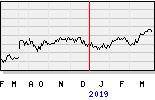
Jon Hague, Head of Clean Future, Science and Technology for Home Care, explains how chemical innovation is reducing the carbon footprint of our cleaning products.
Our Climate Transition Action Plan sets out the steps we will take to halve the greenhouse gas emissions impact of our products, per consumer, by 2030, and to achieve net zero across our value chain by 2039.
In a series of interviews, Unilever is introducing some of the many people helping to deliver our action plan and making change happen. Jon Hague, Home Care’s Head of Clean Future, Science and Technology, explains how we are changing product formulations to lower emissions and provide more sustainable options for consumers.
How long have you been working at Unilever?
I’ve been at Unilever for 32 years and what drew me to the job was my love of science. I’ve worked across many areas of research and development, from deploying products into the market to global design jobs where we create and invent new mixes that go into the brands. At the moment. I’m bringing new science and technology into the Home Care business, creating better products while we transition to a clean future. That means creating superior products that are sustainable by design and affordable to the many.
What does your day-to-day job actually involve?
The lifeblood of research and development is data from our experimental work in laboratories and with partners. That data feeds the future specifications for the products that we make. My job is setting the direction for the research that we do. Shall we look into biosciences or biotechnology? What’s out there in the world of advanced materials research that we can bring into Unilever and harness for the benefit of our products and our consumers?
Did you know?
Greenhouse gas emissions per consumer use have fallen by 43% across Home Care since 20101
When you’re using a washing product, it obviously goes into the water. We’re working to have 100% biodegradable ingredients by 2030, so our products leave very little trace behind in the water courses. But as they biodegrade, they release carbon dioxide into the air.
There are three ways we can tackle that. We can work with suppliers to drive down a material’s initial carbon footprint. We can also use biodegradable, renewable carbon where possible – carbon from plants, which goes back into the plant lifecycle rather than releasing emissions. And the third way is using something we call ‘weight efficiency’ or eco-design.
What is weight efficiency?
When I buy any material, its footprint is related to how much I’ve bought. If I currently need a 50 gram dose of powder to clean a large load of clothes, within that powder there will be a lot of chemicals. Making the chemistry of a product work harder for you, so you only need 25 grams, is a really good way of reducing carbon footprint. We call this weight efficiency.
By making chemicals more weight effective, you basically reduce the amount of material you need. We’re ensuring that for every gram of carbon we use, we’re getting much more bang for our buck. It’s a really important strategy for us and it’s served us very well throughout the business.
If you look at the laundry liquids we sell across Europe now, we’ve halved the level of the cleaning ingredients, not because we want it to clean less, but because we found different cleaning ingredients that were much more weight effective and just as powerful.
A third
of consumers buy from brands based on their social and environmental impact*
How are product concentrations and refills helping?
If you can concentrate products, then you can ship them in much smaller volumes of water. That means that the greenhouse gas impact associated with transportation comes down. But asking consumers to use highly concentrated liquids for their washing machine, for example, can be tricky, as very small doses are harder to measure.
see & read more on
https://www.unilever.com/news/news-search/2022/using-innovation-to-lower-the-footprint-of-our-products/?utm_source=SignUp&utm_medium=Email&utm_campaign=NewsSignUp
